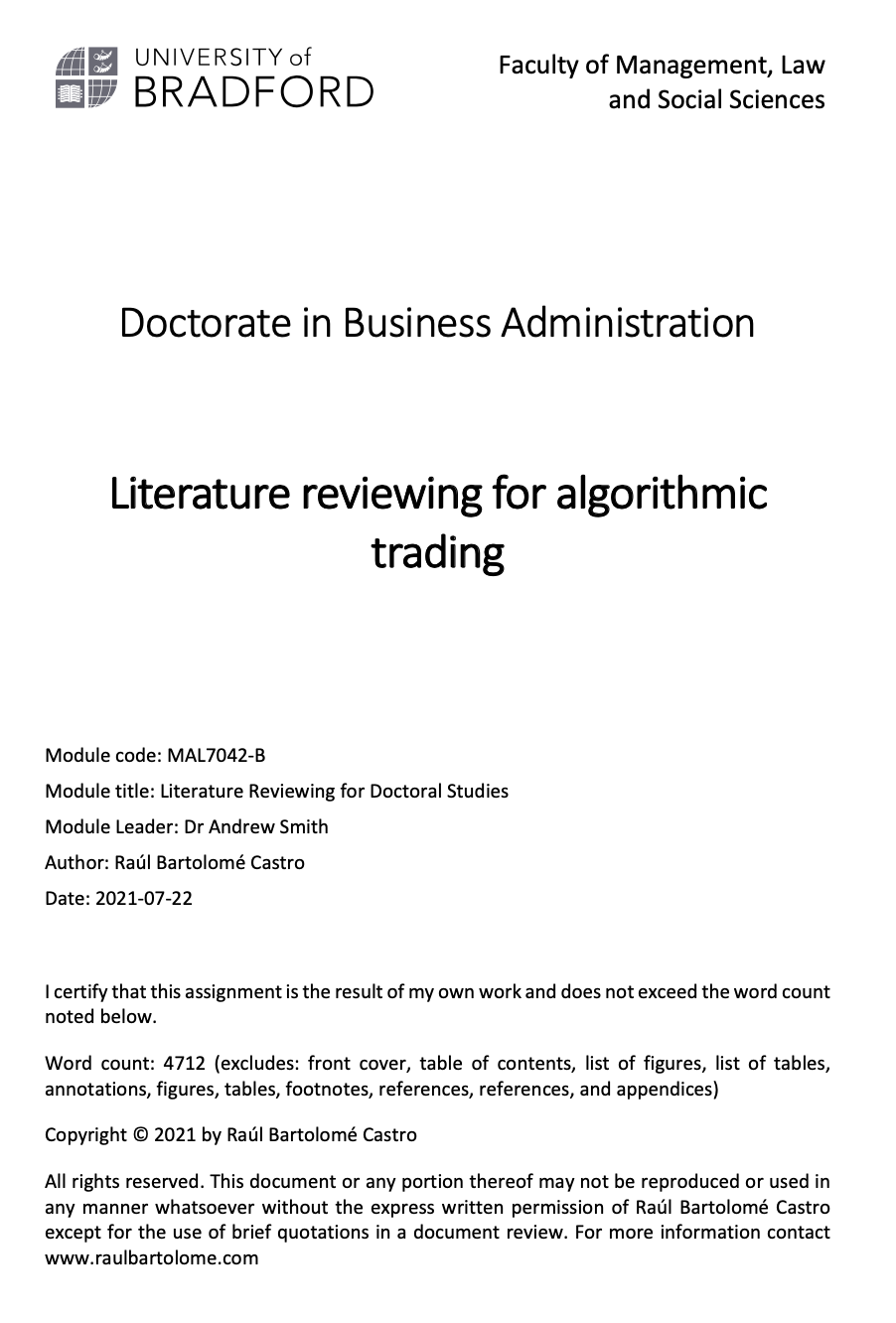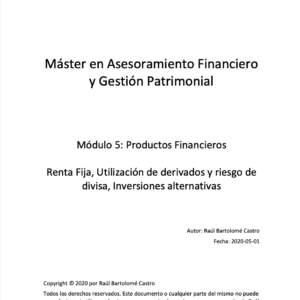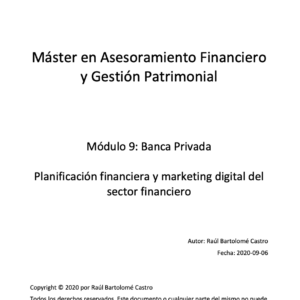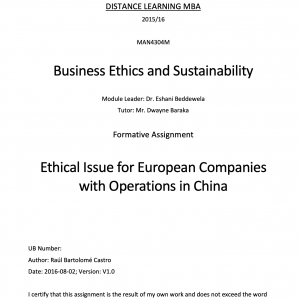The research about algorithmic trading is important due to its predominance in the financial industry. In 2019 a big percentage of the traded equity in US was performed by automated algorithms, that represents 35.1% of $32 trillion with an expected annual growth of 8.7% over the period 2020 – 2027.
The subject is particularly challenging because it falls between three bodies of knowledge: economics, mathematics, and computer science. Likewise, presents many issues, just to mention some. First, its complexity is an entry barrier for any retail investor or small enterprise, but well-exploited by institutional investors. Second, the number of trading strategies and associated information is tremendous, what makes difficult to choose them. Third, the investment needs are idiosyncratic and consequently does not exist a trading strategy that is the best for everyone.
The purpose of this coursework is to articulate a critical and systematic literature reviewing about algorithmic trading. The existing literature is vast, complex, and scattered in three academic fields, inexorably, this study is a naive attempt to build a holistic and comprehensive overview of the subject. The first block of the review tackles the theoretical underpinning through the neoclassical and behavioural finance school of thought. Algorithmic trading is strongly influenced by neoclassical finance, with a vivid debate whether the markets are efficient, and consequently coherent with random walk hypothesis (RWH) and efficient market hypothesis (EMH); or, to the contrary, the markets are inefficient, presenting some sort of trend, arguably, due to phycological bias, like heard behaviour or emotional gap, as described by the behavioural finance. Inevitable, the theoretical underpinning section, leads to the second block, the algorithmic trading literature per se. Here, the author partially reviews eleven textbooks, evidencing the programming language of choice, and connecting to two pivot chapters; backtesting as methodology to evaluate algorithm with historical financial data, and trading strategies from the most actual literature.
This manuscript sets the foundation for a complete literature review of a DBA thesis about the same subject. The natural evolution might include quantitative behavioural finance literature, that uses mathematical tools to model the behavioural biases with potential application to trading algorithms. A second opportunity could consist in a systematic classification of algorithms by categories (e.g. momentum, mean-reverting, value investment, etc.) and statistical results (E.g. return of investment, compound annual growth, Sharpe ratio, etc.), but it has the risk to convert the literature reviewing in an algorithmic trading library (E.g. Quantpedia) and certainly deviating from the purpose of a literature reviewing.
The body of this work is divided in two blocks, chapter 2 Theoretical underpinning and chapter 3 Algorithmic trading. The chapter 2 Theoretical underpinning is structured in two parts, chapter 2.1 Neoclassical finance, showcasing the two pillars of neoclassical finance, RWH and EMH; and chapter 2.2 Behavioural finance, capturing the most influential phycological bias in the financial markets. The chapter 3 Algorithmic trading contains an extensive list of related literature, likewise, holds two distinctive parts, chapter 3.1 Backtesting , with the challenges and pitfalls of backtesting; and chapter 3.2 Trading strategies, with a short, but representative number of strategies classified in mean-reverting, momentum and artificial intelligence. The study ends with the chapter 4 Conclusion, with an analytic synthesis of the most important aspects of this literature reviewing coursework.
€3,99




Reviews
There are no reviews yet.